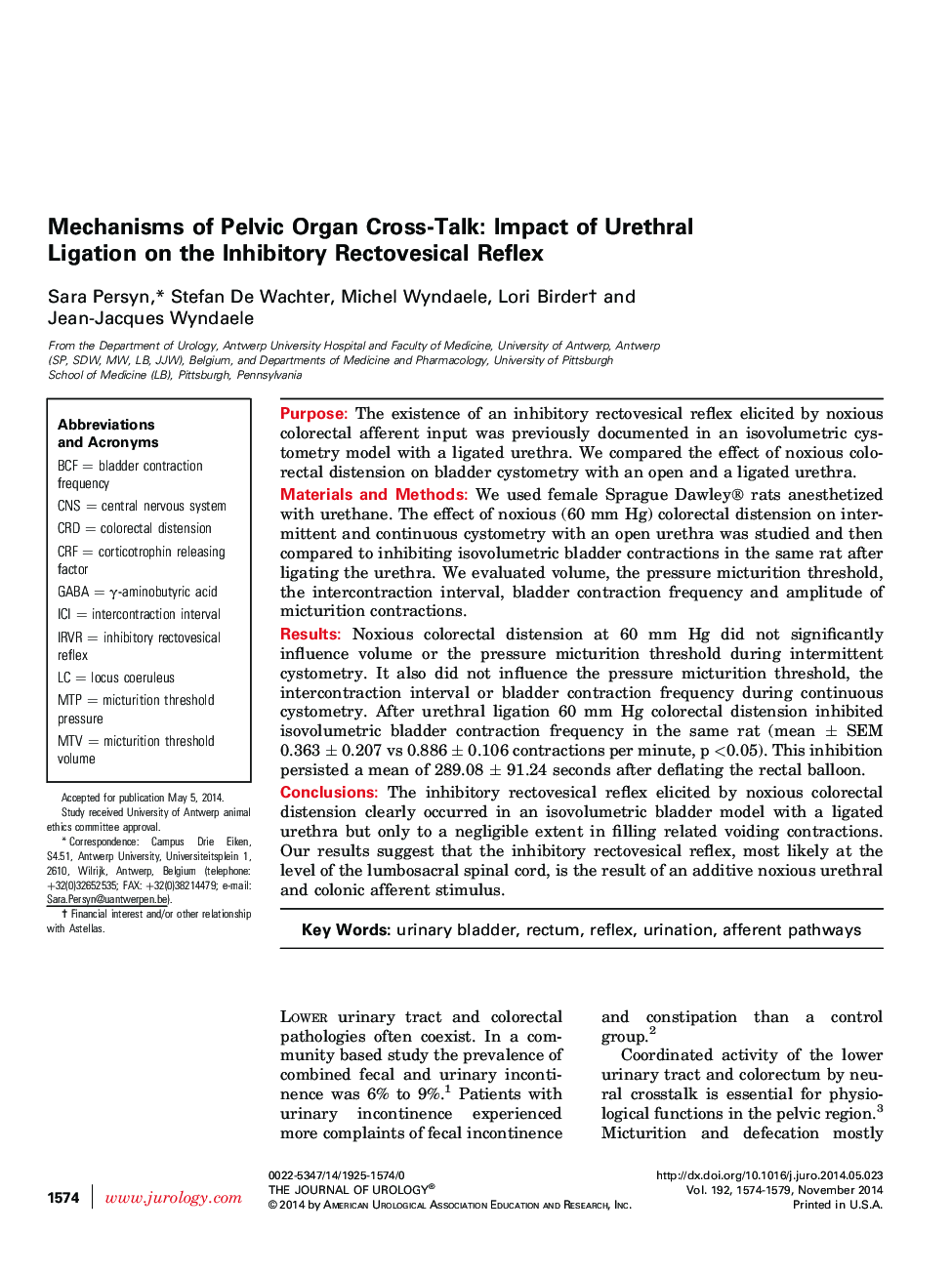| Article ID | Journal | Published Year | Pages | File Type |
|---|---|---|---|---|
| 3864028 | The Journal of Urology | 2014 | 6 Pages |
PurposeThe existence of an inhibitory rectovesical reflex elicited by noxious colorectal afferent input was previously documented in an isovolumetric cystometry model with a ligated urethra. We compared the effect of noxious colorectal distension on bladder cystometry with an open and a ligated urethra.Materials and MethodsWe used female Sprague Dawley® rats anesthetized with urethane. The effect of noxious (60 mm Hg) colorectal distension on intermittent and continuous cystometry with an open urethra was studied and then compared to inhibiting isovolumetric bladder contractions in the same rat after ligating the urethra. We evaluated volume, the pressure micturition threshold, the intercontraction interval, bladder contraction frequency and amplitude of micturition contractions.ResultsNoxious colorectal distension at 60 mm Hg did not significantly influence volume or the pressure micturition threshold during intermittent cystometry. It also did not influence the pressure micturition threshold, the intercontraction interval or bladder contraction frequency during continuous cystometry. After urethral ligation 60 mm Hg colorectal distension inhibited isovolumetric bladder contraction frequency in the same rat (mean ± SEM 0.363 ± 0.207 vs 0.886 ± 0.106 contractions per minute, p <0.05). This inhibition persisted a mean of 289.08 ± 91.24 seconds after deflating the rectal balloon.ConclusionsThe inhibitory rectovesical reflex elicited by noxious colorectal distension clearly occurred in an isovolumetric bladder model with a ligated urethra but only to a negligible extent in filling related voiding contractions. Our results suggest that the inhibitory rectovesical reflex, most likely at the level of the lumbosacral spinal cord, is the result of an additive noxious urethral and colonic afferent stimulus.
